Nowadays fast-speed in the digital world, maintaining email planning can be a challenging task. The rise of AI email assistants has transformed how we tackle our inboxes, providing a wide range of options that streamline communication, increase productivity, and minimize the stress associated with managing a high capacity promising to develop how we engage with our email. In this inclusive guide, we’ll explore the top notch 10 AI email assistants for 2024, examining their options, pricing, and reviews to help you find the best fit for your requirements.
The Impact of AI on Email
AI has displayed its ability to understand and use human language usefully. While it isn’t fully autonomous yet, it can crucially increase your existing automation processes by making well informed decision, with you keeping the final say on any outputs.
So, what does this indicate for AI-powered email applications? Let’s develop the key options that can streamline your inbox.
Generative AI
These days, the most frequent use of AI in email applications includes writing messages. You can begin writing a new email built on a prompt-similar to how you would with ChatGPT–or produce replies by analyzing the text of incoming messages.
In addition options involve spell-checking, AI-assisted rewriting, quick reply opinions, and the capability to create one-click pre-generated replies.
Content Processing
AI’s concern of language permits it to analyze email content. For example, it can:
Get exclusive access to all things tech-savvy, and be the first to receive
the latest updates directly in your inbox.
- Conduct Sentiment Analysis: This helps you measure the sender’s emotions, specify whether a sensitive response is required or if the sender is open-minded to further discussion.
- Identify Topics: This potential allows the sorting of incoming emails into tags, labels, or folders, allowing you to prioritize your inbox valuably.
- Summarize Emails: It can liquefy long email sense, making it easier to manage and revisit conversations later.
Data Extraction and Enrichment
AI can identify and extract various types of data from your emails and store them in connected applications. Here are some examples:
AI can recognize and remove various types of data from your emails and reserve them in connected applications. Here are some examples:
- Bring out contact information from emails and add them to your CRM.
- Drag invoice numbers to update your accounting software.
- Take out attachments, read their contents, and order them in your project management app.
Data extraction recovers information from emails, while data improvement provides context by drawing the same historical data and public information to increase ongoing conversations.
Train Your Own AI Model
You can order an AI model with information about yourself and your business, and admit it to assist in drafting email feedback and causing other types of content.
There are two main procedures to reach this: you can either lease a developer to fine-tune an OpenAI model with your data or use a simpler tool like Personal AI to build a personalized language model that returns your knowledge and composing style. This model can then be unified with automation tools like Zapier to tackle your emails and route key information into systems such as CRM software, which you can also explore on Spotsaas.
Combining Features
All these potentials can work jointly. For example, you can set up an AI to read your inbox, draw out the same data, manage an emotion survey, and check for important information from your tech pile.
You might build replies on the senders’ messages using AI agent development services that understand context and manage your emails by urgency, awaiting your confirmation before sending. This way, you can analysis each email at the end of the day, securing everything that lines up with your belief.
This is just the point of the iceberg; the variety of AI in email can lead to unique workflows that modify to different requirements, even though reaching a complex setup may need some observation.
What to Look for in AI Email Assistant Software
In assess AI email applications, consider the following criteria:
- Ease of Integration: The process should be quick and straightforward with major email platforms.
- Inbox Management: Focus on apps designed for personal inbox management rather than sales or customer service.
- Advanced AI Features: Look for abilities beyond essential text generation, such as emotions analysis and data extraction.
- Productivity Tools: The app should provide additional options to help you streamline your workflow and achieve inbox zero.
- Data Privacy: Guarantee the app maintains strong security measures to save your private emails.
Over two weeks, I researched various AI email assistants, filtering out those that simply added generative AI to the compose window. I tested each app thoroughly, assessing its functionalities, settings, and overall effectiveness, leading to my final selections.

1. Superhuman
Features: Superhuman is famous for its speed and ability. Its AI potential involves smart email triage, which helps you prioritize important messages and sort less carping ones. The assistant provides advanced search options, read receipts, and the capacity to schedule emails. One of its standout options is its “Command Palette,” allowing users to achieve commands and navigate their inbox rapidly using keyboard shortcuts.
Pricing: Superhuman is situated as a high quality managed email service, with a subscription fee of approximately $30 per month. This price point indicates its focus on delivering a high-end, sleek experience with top quality customer support.
Reviews: Users regularly acclaim Superhuman for its high speed and built-in collaboration. However, some backbiters argue that its high prizing may not be justified for all users, specifically those who don’t need its modern options.

2. Grammarly
Features: Grammarly is globally known for its writing assistance, but its email capabilities are also majestic. Its AI-powered writing assistant offers real-time grammar and style opinions, helping you profession varnished and professional emails. Grammarly can generate responses based on the tone and style you prefer, making email drafting faster and more effective.
Pricing: Grammarly provides a free version with essential writing advancement, however the Premium plan costs around $12 per month. For advanced options like plagiarism awareness and adding tone adjustments, the Business plan is available at around $15 per user per month.
Reviews: Grammarly offers a free version with basic writing innovation proficiency. Users admire the real-time feedback and flawless integration with different kinds of email clients. However, some find the premium version’s cost to be a barrier, particularly for friendly users.

3. SaneBox
Features: SaneBox specializes in email firms and simplifies. It uses AI to examine your email habits and sort incoming messages into folders such as “Important” “later” and “SaneNews.” SaneBox also provides options like email reminders, rest features, and a breakdown of unread emails, make sure you never miss important messages.
Pricing:SaneBox costing starts at $7 per month for the essential plan, with more modern options available in higher layers costing at up to $36 per month. There is also a 14-day free trial available for new users.
Reviews: SaneBox is celebrated for its successful email supervision, Users particularly value its capabilities to decrease inbox clutter and its intuitive categorization system. Some users, however, have recognized that the service’s effectiveness can depend on email size and usage patterns.

4. Mailbird
Features: Mailbird is a flexible email client with strong AI options outlined to increase lushness. It provides options like speed reading, customizable setup, and a unified inbox that is joined with numerous email accounts and apps. Its AI-driven Smart create and Quick Actions streamline the email drafting process and task management.
Pricing: Mailbird provides a free version with essentials options, while its Pro version is costing at $39 per year. There is also a existence license ready to use for a one-time payment of $79, which adds all future updates.
Reviews: Mailbird is considered for its user-friendly connection and integration potential. Users valued the customization features and productivity options. Some have mentioned irregular bugs and similarity issues, but overall, it remains a popular choice for email management.

5. Hiver
Features: Hiver focuses on team alliance and shared inboxes, making it unique for businesses. Its AI options require email assignment, internal notes, and task management. Hiver integrates an ideal option for Gmail, allowing teams to join effectively and track email performance using analytics.
Pricing: Hiver’s costing starts at $12 per user per month, with extra options and support available in higher tiers. There is also a 7-day free trial available for new users.
Reviews:. Hiver is a highly regarded help desk software, particularly commend for its team collaboration options and no difficulty of integration with Gmail. Users can cherish the capability to manage shared inboxes and check the team performance. However, some users find the costing to be on the higher side for smaller teams.
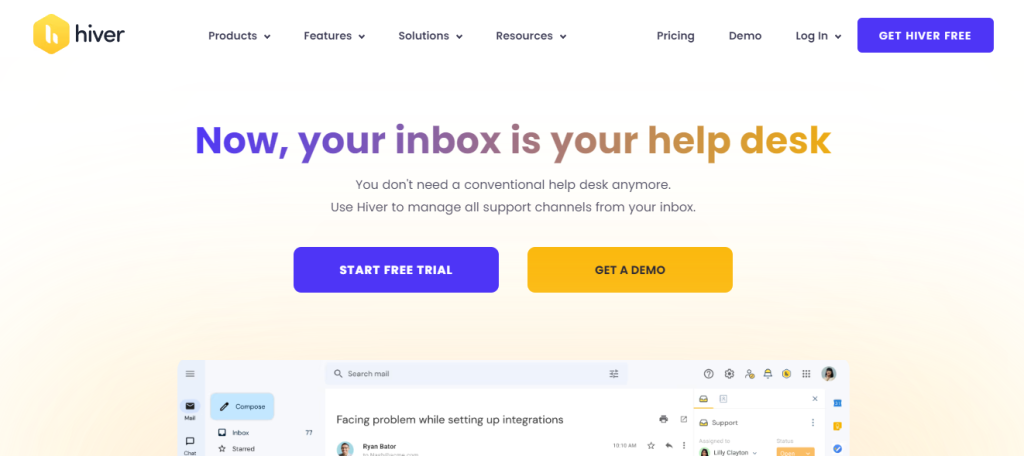
6. Clean Email
Features: Clean Email focuses on inbox organization and simplifies. Its AI-driven options adding automatic email categorization, massive actions for cleaning up old emails, and email grouping based on the same content. Clean Email also provides custom-made filters and a privacy-intense approach.
Pricing: Clean Email provides a free of cost version with limited options. The Premium plan begins at $7.99 per month, with features for annual subscriptions and family plans available.
Reviews: Users admire Clean Email’s usefulness in decreasing inbox litter and its easy-to-use links. The privacy-focused process is also a highlight for many. Some users have point-out that the free version’s restrictions may need an improvement for full functionality.
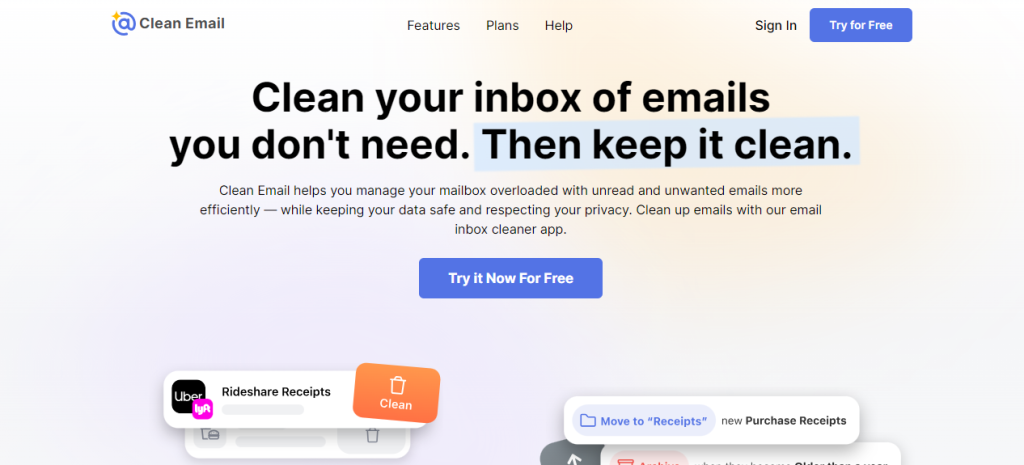
7. Newton Mail
Features: Newton Mail providing of AI-powered options, which includes read receipts, email scheduling, and a snooze function. Its “Tidy Inbox” options helps users run and organize emails by categorizing them into opposed folders. Newton Mail also require integrations with various productivity tools and services.
Pricing: Newton Mail provides a 14-day free trial, with the subscription priced at $49.99 annually. There is no free tier, but the costing returns the premium options and customer support provided.
Reviews: Newton Mail is compliment for its clean link and powerful options. Users recongnize the read receipts and organize features. However, some have found the yearly subscription cost to be a bit high, especially given the lack of a free version.
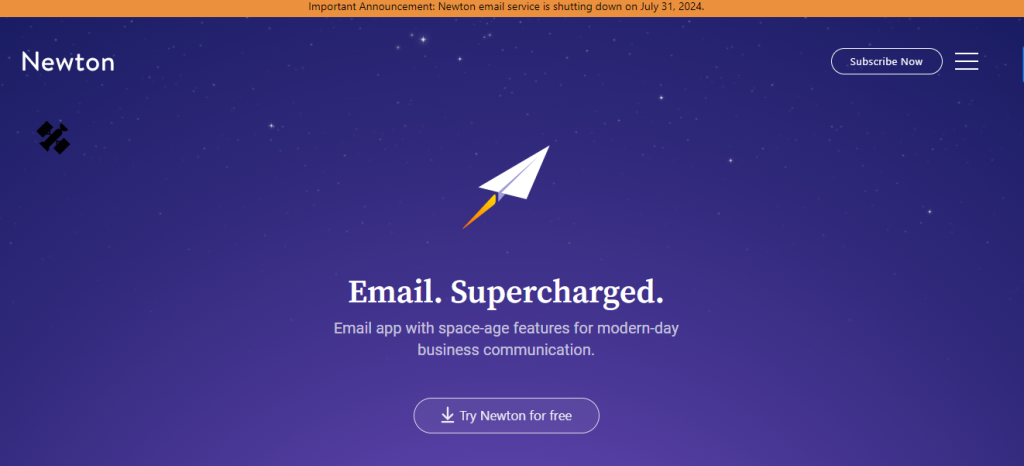
8. Astro
Features: Astro merges AI with a casual interface to increase email management. Its options include smart email categorization, a built-in AI chatbot for quick, and integration with potency tools like Slack and Trello. Astro’s “Astrobot” helps run your inbox by automatically sorting and prioritizing emails.
Pricing: Astro provides a free version with basic features. The Pro version, which requires additional functionalities, is priced at $9.99 per month.
Reviews: Astro is well-regarded for its creative AI chatbot and conversational links. Users admire the smart categorization and integration options. Some users are eminent that the app can be resource-intensive and that occasional bugs may disrupt functionality.
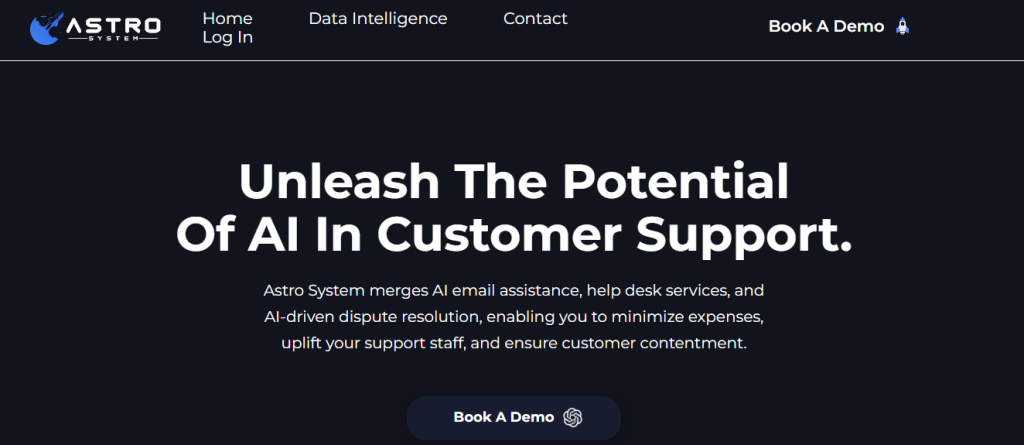
9. Zoho Mail
Features: Zoho Mail provides a suite of AI-powered options aimed at increasing productivity and collaboration. Its capabilities include smart filters, email organization, and integration with Zoho’s suite of business applications. Zoho Mail also offers features like email retention policies and fixed email storage.
Pricing: Zoho Mail provides a free plan with basic features for personal use. Paid plans start at $1 per user per month, with more advanced features available in higher tiers priced at up to $8 per user per month.
Reviews: Zoho Mail is praised for its affordability and extensive feature set. Users appreciate the integration with Zoho’s business tools and the secure email storage options. However, some users have found the user interface to be less intuitive compared to other email clients.
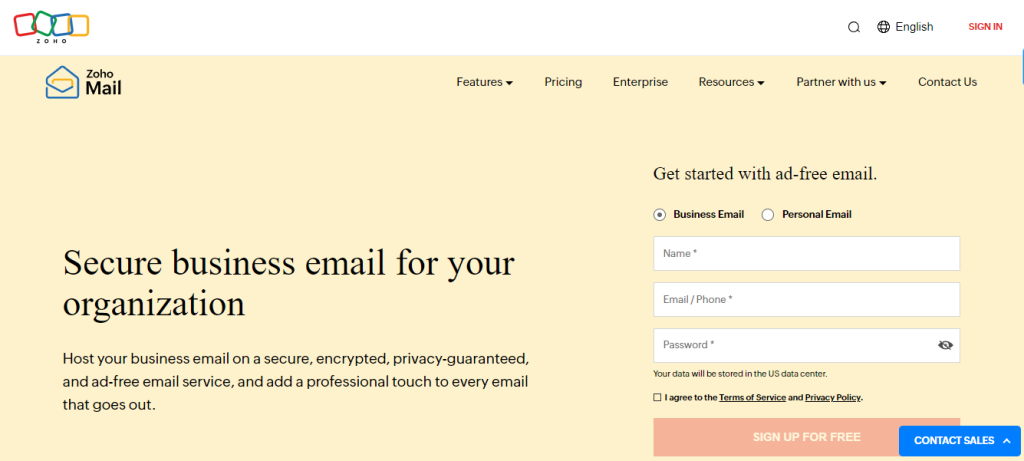
10. Clara
Features: Clara is designed to help users manage their email and scheduling efficiently. Its AI-driven features include smart scheduling that finds suitable meeting times, email management that reads and responds to emails, and seamless integration with popular calendar applications. Clara also utilizes natural language processing for meaningful interactions and offers customizable settings to tailor its functionality.
Pricing: Clara typically offers a subscription model with a free trial period. The premium plan starts at around $5 per month, with pricing tiers based on the level of service and number of users.
Reviews: Clara is praised for its effectiveness in automating scheduling and email responses. Users appreciate the intuitive interface and the convenience of having an AI assistant handle communication. However, some have noted that the pricing may be a consideration for those seeking budget-friendly options.
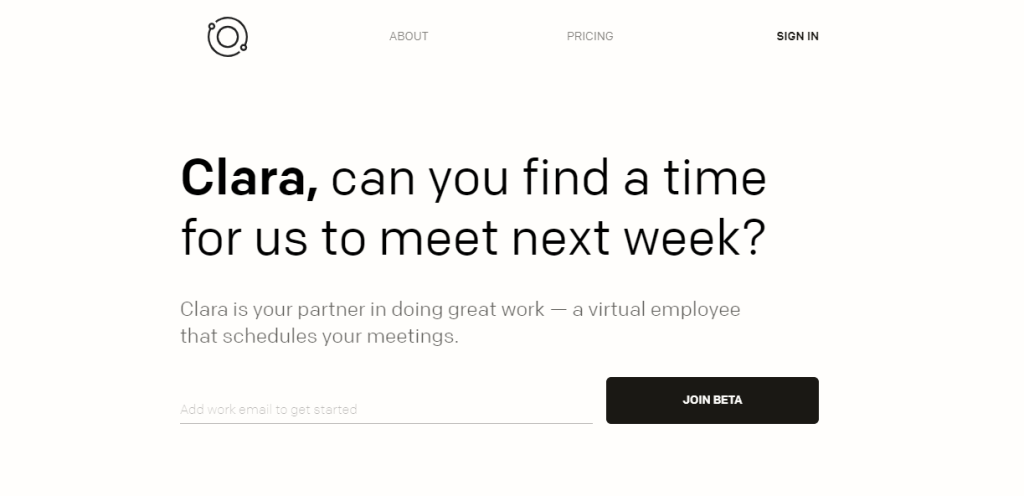
11. Freshdesk
Features: Freshdesk is one of the best customer service email ticketing systems, known for its AI capabilities in email ticket management. Its proprietary AI engine, Freddy AI, enhances email ticket management by analyzing customer sentiment, drafting responses, and summarizing lengthy conversations. Freddy AI also supports 24/7 assistance by auto-responding to email queries, which boosts agent productivity and ensures seamless customer support around the clock.
Pricing: Freshdesk’s pricing starts at $15 per agent/month, which includes essential email ticketing features and automation. For advanced AI functionality, Freddy AI is available at an additional cost of $100 per 1000 resolutions (approximately $0.10 per resolution).
Reviews: Freshdesk is a highly favored platform for customer service automation, particularly among SMBs, small teams, and larger enterprises. It is praised for its ease of use, affordability, and scalability. Additionally, users appreciate the robust AI capabilities. However, some have noted that the mobile app offers fewer features compared to the web version. Despite this, Freshdesk remains a popular choice for email support automation.

Conclusion
As we navigate the ever-evolving landscape of email management in 2024, AI email assistants offer a diverse range of features to cater to different needs and preferences. Whether you’re looking for advanced productivity tools, seamless team collaboration, or simple email organization, there’s an AI email assistant to match your requirements.
From premium options like Superhuman to more affordable solutions like Clara, each assistant brings unique strengths to the table. When choosing the right AI email assistant for you, consider factors such as your budget, required features, and overall user experience. With the right tool, managing your email can become a more efficient, less stressful task, allowing you to focus on what truly matters.
As AI continues to advance, we can expect even more innovative features and improvements in the future. Staying informed about the latest developments will help you make the most of these powerful tools and ensure that your email management remains top-notch



